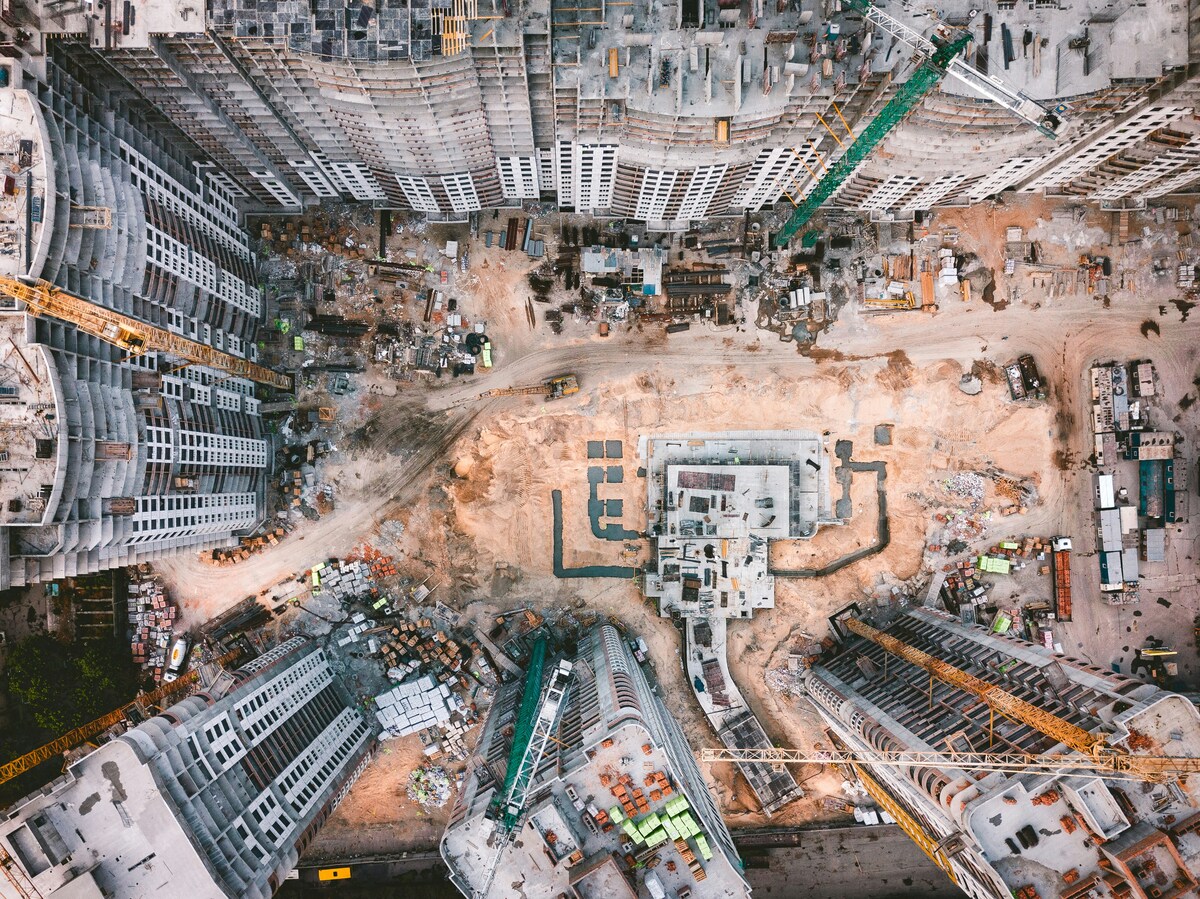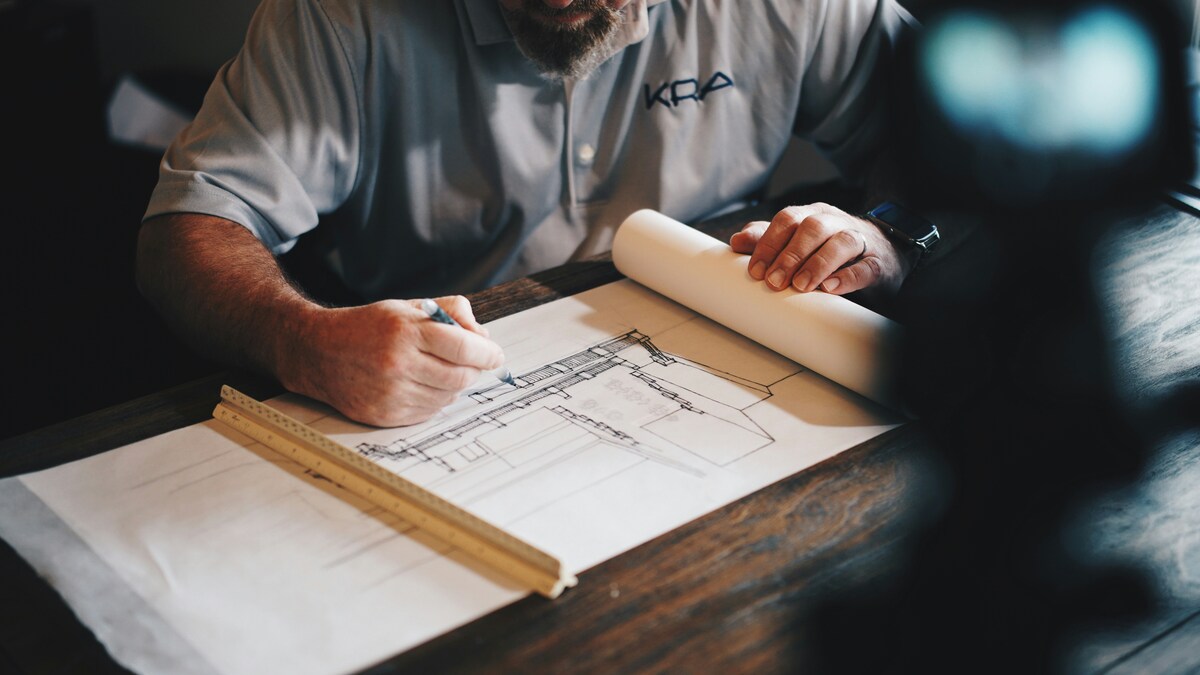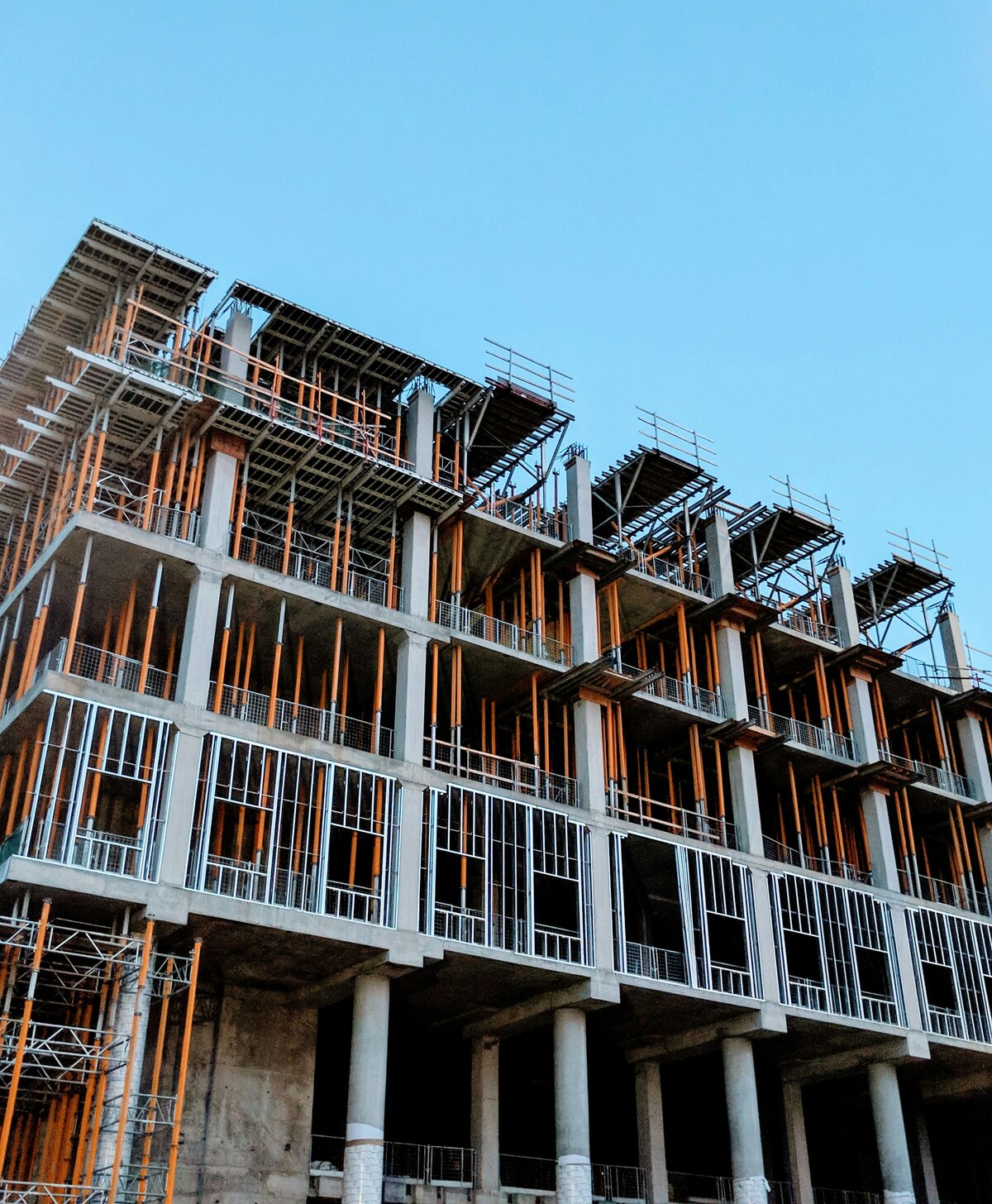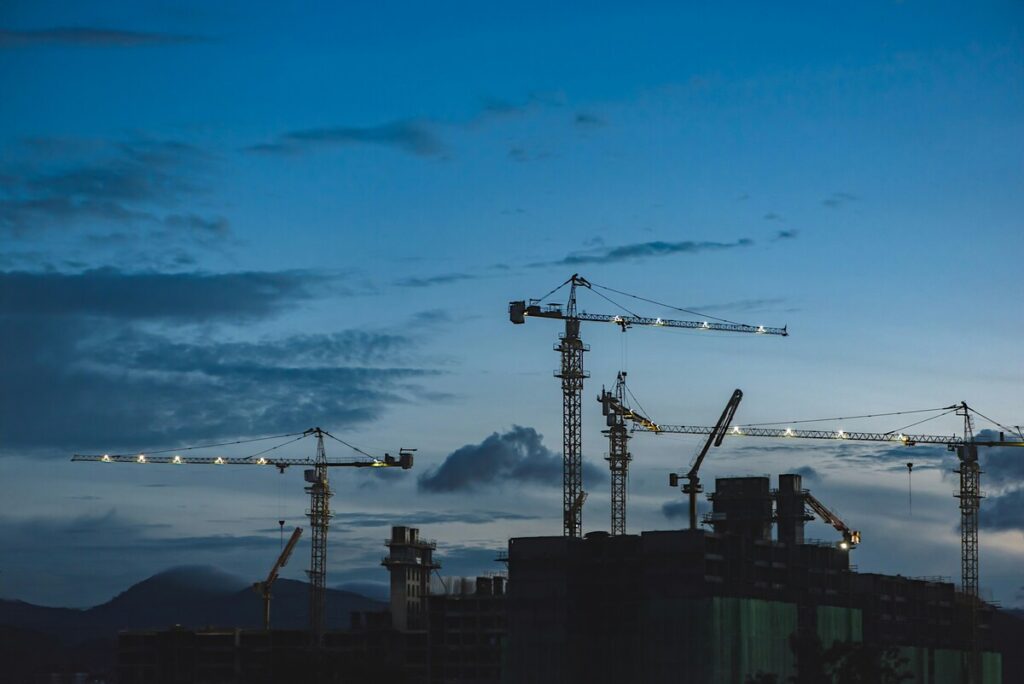In the ever-expanding urban landscape of today, buildings stand as the backbone of modern civilization, shaping our lives in profound ways. Yet, amidst their towering presence, buildings also represent a significant source of energy consumption, environmental impact, and operational costs. According to the International Energy Agency (IEA), buildings are responsible for approximately 40% of global energy consumption and 30% of greenhouse gas emissions. As we confront the urgent challenges of climate change, resource scarcity, and urbanization, optimizing building performance becomes not just a priority but a moral imperative.
The Overview of optimizing building performance serves as a beacon of insight into the multifaceted realm of enhancing building efficiency, sustainability, and resilience. From energy efficiency improvements and renewable energy integration to data analytics and smart building systems, this comprehensive guide explores the top strategies and innovations driving the transformation of the building industry. Through a lens of innovation, collaboration, and sustainability, stakeholders across the building sector can unlock the full potential of optimizing building performance and pave the way for a more sustainable and prosperous future.
Table of Contents
Overview of Optimizing Building Performance
The Overview of Building Performance Optimization serves as the foundational section of the article, setting the stage for understanding the significance and scope of this critical aspect of modern construction and infrastructure management.
Introduction to Building Performance Optimization
Building Performance Optimization encompasses a range of strategies and techniques aimed at enhancing the efficiency, sustainability, and overall functionality of built environments. It addresses various aspects of a building’s performance, including energy consumption, environmental impact, occupant comfort, and operational costs. In essence, it seeks to maximize the value derived from a structure while minimizing its negative impacts on both the environment and its occupants.
Significance of Building Performance Optimization
The importance of building performance optimization has grown exponentially in recent years due to several interconnected factors. Firstly, there is an increasing global focus on sustainability and environmental stewardship. Buildings are significant contributors to energy consumption, greenhouse gas emissions, and resource depletion. Optimizing their performance is crucial for mitigating these impacts and transitioning towards more sustainable development practices.
Secondly, rising energy costs and concerns about resource scarcity have underscored the economic imperative of building performance optimization. By improving energy efficiency and reducing operational expenses, building owners and managers can achieve significant cost savings over the lifecycle of a structure.
Moreover, the quality of the built environment significantly impacts the health, productivity, and well-being of occupants. Building performance optimization plays a vital role in ensuring optimal indoor air quality, thermal comfort, lighting levels, and acoustics, thereby enhancing occupant satisfaction and productivity.
Key Components of Building Performance Optimization
Building performance optimization involves a holistic approach that addresses multiple interrelated factors. These may include:
- Energy Efficiency: Implementing measures to minimize energy consumption through efficient HVAC systems, insulation, lighting, and renewable energy integration.
- Environmental Sustainability: Adopting eco-friendly materials, reducing carbon emissions, and promoting sustainable construction and operational practices.
- Occupant Comfort and Health: Ensuring indoor air quality, proper ventilation, thermal comfort, adequate lighting, and noise control to create a healthy and productive indoor environment.
- Operational Efficiency: Streamlining building operations through advanced automation, predictive maintenance, and smart building technologies to optimize resource utilization and minimize downtime.
- Life Cycle Performance: Considering the long-term performance and resilience of buildings by factoring in maintenance, durability, adaptability, and end-of-life considerations.
Suggested article to read: Sustainable Construction Technology; Ultimate Guide in 2024
optimizing building performance is a multifaceted endeavor with far-reaching implications for environmental sustainability, economic viability, and human well-being. As we navigate the challenges of urbanization, climate change, and resource constraints, optimizing the performance of our built environment becomes not just a necessity but a moral and economic imperative. By embracing innovative technologies, design strategies, and operational practices, we can create buildings that not only meet our present needs but also contribute positively to the future of our planet and society.

Current Challenges in Building Performance
The current landscape of building performance optimization is marked by several challenges that hinder the efficient operation and sustainability of built environments. Understanding and addressing these challenges is crucial for advancing the field and achieving meaningful progress in optimizing building performance. Here are some of the key challenges:
- Aging Infrastructure: Many existing buildings suffer from outdated infrastructure and systems that are inefficient and prone to failure. Retrofitting older buildings to meet modern performance standards can be costly and complex, presenting a significant challenge for building owners and managers.
- Fragmented Data and Information: Building performance optimization relies heavily on data collection, analysis, and interpretation. However, relevant data often exist in disparate formats and systems, making it challenging to obtain a comprehensive view of a building’s performance. Integrating data from various sources and platforms is a significant challenge faced by stakeholders in the building industry.
- Lack of Standardization: The absence of standardized metrics and benchmarks for building performance makes it difficult to assess and compare the effectiveness of optimization efforts. Without universally accepted standards, stakeholders may struggle to set meaningful goals and track progress towards achieving them.
- Financial Constraints: Many building owners and managers face financial constraints that limit their ability to invest in building performance optimization measures. The upfront costs associated with energy-efficient technologies, system upgrades, and retrofits can be prohibitive, especially for smaller organizations or those operating on tight budgets.
- Behavioral Barriers: Human behavior plays a significant role in building performance, yet changing behavior patterns and promoting sustainable practices among occupants and stakeholders can be challenging. Lack of awareness, resistance to change, and competing priorities may impede efforts to optimizing building performance effectively.
- Regulatory Complexity: Navigating the complex landscape of building codes, regulations, and compliance requirements poses a challenge for building owners and developers. Compliance with evolving regulatory standards and mandates often requires significant time, resources, and expertise, adding complexity to building performance optimization efforts.
- Technological Integration: The rapid pace of technological innovation introduces both opportunities and challenges for building performance optimization. Integrating new technologies, such as IoT sensors, building automation systems, and data analytics platforms, into existing infrastructure can be challenging and may require significant upfront investment in training and infrastructure upgrades.
- Resilience and Climate Change: The increasing frequency and severity of extreme weather events, coupled with the long lifespan of buildings, highlight the importance of designing and optimizing building performance for resilience to climate change impacts. Ensuring that buildings can withstand and recover from natural disasters and climate-related disruptions presents a complex challenge for building designers and planners.
Suggested article to read: Sustainable Construction; Comprehensive Guide 2024
Addressing these challenges requires a collaborative and multidisciplinary approach, involving stakeholders from across the building industry, including architects, engineers, contractors, policymakers, and building owners. By overcoming these obstacles, stakeholders can unlock the full potential of building performance optimization and create healthier, more sustainable, and resilient built environments for current and future generations.
Top 7 Ways of Optimizing Building Performance
Here are the top 7 ways of optimizing building performance:
1. Energy Efficiency Improvements
-
- Implement energy-efficient measures such as LED lighting, high-efficiency HVAC systems, insulation upgrades, and smart thermostats.
- Conduct energy audits to identify areas of energy waste and prioritize improvements based on potential energy savings.
Energy efficiency improvements are paramount in optimizing building performance, offering substantial benefits in terms of cost savings, environmental sustainability, and occupant comfort. By implementing energy-efficient measures, buildings can significantly reduce their energy consumption while maintaining or even enhancing their functionality and usability.
One of the most effective energy efficiency improvements involves upgrading lighting systems to utilize LED technology. LED lighting consumes significantly less energy than traditional incandescent or fluorescent lighting while offering longer lifespans and better quality illumination. By replacing outdated lighting fixtures with LEDs, buildings can achieve substantial energy savings and reduce maintenance costs over time.
Another crucial aspect of energy efficiency improvements is upgrading HVAC (Heating, Ventilation, and Air Conditioning) systems to high-efficiency models. Modern HVAC systems incorporate advanced technologies such as variable-speed compressors, energy recovery ventilation, and smart thermostats to optimize energy usage while maintaining optimal indoor comfort levels. Proper insulation and air sealing further enhance the performance of HVAC systems by minimizing energy losses and reducing the workload on heating and cooling equipment.
Additionally, implementing smart building controls and automation systems can optimize energy usage by dynamically adjusting lighting, HVAC, and other building systems based on occupancy patterns, time of day, and environmental conditions. By leveraging sensors, actuators, and predictive algorithms, smart building systems can identify opportunities for energy savings and proactively adjust building operations to maximize efficiency.
Overall, energy efficiency improvements represent a cornerstone of building performance optimization, offering a cost-effective and environmentally sustainable approach to reducing energy consumption and enhancing overall building performance. By investing in energy-efficient technologies and practices, building owners and managers can lower operating costs, reduce carbon emissions, and create healthier and more comfortable indoor environments for occupants.
Suggested article to read: Importance of Energy Efficiency in Buildings
2. Building Automation Systems
-
- Install building automation systems (BAS) to monitor and control various building systems, including HVAC, lighting, security, and occupancy.
- Utilize BAS to optimize energy usage, enhance occupant comfort, and streamline building operations through automated scheduling and demand-response capabilities.
Building Automation Systems (BAS) revolutionize the way buildings are managed and operated, offering advanced capabilities to monitor, control, and optimize various building systems and functions. BAS integrates a network of sensors, actuators, controllers, and software applications to automate and streamline the operation of building systems such as HVAC (Heating, Ventilation, and Air Conditioning), lighting, security, and access control.
At the core of a Building Automation System is the central control unit, often referred to as the Building Management System (BMS) or Building Energy Management System (BEMS). This centralized platform serves as the brain of the building, collecting data from sensors deployed throughout the facility and using algorithms to analyze information and make real-time decisions to optimizing building performance.
One of the primary benefits of BAS is its ability to improve energy efficiency and reduce operational costs. BAS can dynamically adjust HVAC settings based on occupancy patterns, outdoor weather conditions, and other factors to minimize energy consumption while maintaining comfort levels. Lighting systems can be programmed to adjust brightness levels based on natural light availability and occupancy, further reducing energy waste.
Moreover, BAS enhances occupant comfort and productivity by ensuring optimal environmental conditions throughout the building. Automated temperature control, ventilation, and humidity management help create a more comfortable and healthy indoor environment. BAS can also integrate with building security and access control systems to enhance safety and security measures.
Additionally, BAS provides valuable insights into building performance through data analytics and reporting capabilities. Facility managers can monitor key performance indicators, track energy usage trends, identify inefficiencies, and proactively address issues to improve overall building operations and maintenance.
Overall, Building Automation Systems play a crucial role in optimizing building performance, enhancing energy efficiency, and improving occupant comfort and safety in today’s built environment.
Suggested article to read: Automation in Construction: A Guide to 2024
3. Renewable Energy Integration
-
- Incorporate renewable energy sources such as solar panels, wind turbines, or geothermal systems to generate clean, on-site power.
- Implement net-zero energy or carbon-neutral strategies by combining renewable energy generation with energy-efficient design and building practices.
Renewable energy integration is a pivotal strategy in optimizing building performance, offering a sustainable and environmentally friendly solution to meet energy needs. This approach involves harnessing clean energy sources such as solar, wind, geothermal, and hydropower to power buildings, reducing reliance on traditional fossil fuels and mitigating carbon emissions.
Solar energy is among the most accessible and widely adopted renewable energy sources for building integration. Photovoltaic (PV) solar panels installed on rooftops or facades capture sunlight and convert it into electricity, providing on-site renewable power generation. Additionally, solar thermal systems can be utilized for heating water and space heating in buildings, further enhancing energy efficiency.
Wind energy can also be harnessed through small-scale wind turbines installed on building rooftops or adjacent properties. These turbines capture wind energy and convert it into electricity, supplementing or offsetting grid-based power consumption.
Geothermal energy systems utilize the constant temperature of the earth below the surface to provide heating, cooling, and hot water for buildings. Ground-source heat pumps circulate a fluid through underground pipes to transfer heat to or from the earth, depending on the season, offering a highly efficient and reliable renewable energy solution.
Hydropower, though less commonly implemented in building-scale applications, can be utilized where suitable water resources are available. Micro-hydro systems can generate electricity from flowing water, such as streams or rivers, providing a continuous and renewable energy source.
Integrating renewable energy into buildings not only reduces greenhouse gas emissions and environmental impact but also offers economic benefits such as long-term energy cost savings and energy independence. With advancing technologies and supportive policies, renewable energy integration is poised to play an increasingly significant role in optimizing building performance and promoting sustainable development.
Suggested article to read: Top 24 Sustainable Construction Technologies in 2024

4. Green Building Certifications
-
- Pursue green building certifications such as LEED (Leadership in Energy and Environmental Design) or ENERGY STAR to validate and showcase the sustainability and performance of a building.
- Follow the guidelines and criteria outlined by green building certifications to optimize energy and water usage, minimize environmental impact, and improve indoor air quality.
Green building certifications are voluntary rating systems that assess and validate the environmental performance and sustainability of buildings. These certifications provide independent verification that a building meets specific criteria related to energy efficiency, water conservation, materials selection, indoor environmental quality, and overall environmental impact.
One of the most widely recognized green building certification programs is LEED (Leadership in Energy and Environmental Design), developed by the U.S. Green Building Council (USGBC). LEED certification is based on a point system, with buildings earning points for various sustainable features and practices. Certification levels include Certified, Silver, Gold, and Platinum, with each level representing increasing levels of environmental performance.
Another prominent green building certification is ENERGY STAR, administered by the U.S. Environmental Protection Agency (EPA). ENERGY STAR certification focuses primarily on energy efficiency and is awarded to buildings that meet strict energy performance standards compared to similar buildings nationwide.
Green building certifications offer several benefits to building owners, occupants, and the environment. They help reduce energy and water consumption, lower operating costs, improve indoor air quality, enhance occupant comfort and productivity, and reduce greenhouse gas emissions. Additionally, green building certifications provide market differentiation and recognition for environmentally responsible buildings, increasing their market value and attractiveness to tenants, investors, and occupants.
By pursuing green building certifications, building owners and developers demonstrate their commitment to sustainability, environmental stewardship, and responsible building practices. As the demand for sustainable buildings continues to grow, green building certifications play a crucial role in driving the adoption of sustainable design, construction, and operations practices worldwide.
Suggested article to read: What is Green Power in Building? 2024 Review
5. Occupant Engagement and Education
-
- Engage building occupants through education and awareness campaigns to promote sustainable behaviors and practices.
- Provide feedback mechanisms and occupant-centric controls to empower occupants to actively participate in building performance optimization efforts.
Occupant engagement and education play a pivotal role in optimizing building performance by fostering a culture of sustainability, raising awareness about energy conservation, and empowering occupants to actively participate in efficiency efforts. Effective engagement strategies can significantly influence occupant behaviors and contribute to long-term energy savings and environmental benefits.
Firstly, educational initiatives within buildings provide occupants with valuable information about energy-saving practices, such as turning off lights when not in use, adjusting thermostats for optimal comfort, and utilizing natural daylighting. By understanding the rationale behind these actions and their impact on building performance, occupants are more likely to adopt and adhere to sustainable behaviors.
Moreover, engagement efforts create opportunities for dialogue and collaboration between building management and occupants, fostering a sense of ownership and shared responsibility for energy conservation. Providing feedback mechanisms, such as energy usage dashboards or occupant surveys, allows occupants to monitor their energy consumption and contribute ideas for improvement.
Occupant-centric controls, such as adjustable lighting and temperature settings, further empower individuals to customize their environment according to their preferences while still promoting energy efficiency. By offering choices and flexibility, buildings can accommodate diverse occupant needs while simultaneously promoting sustainability.
Additionally, ongoing communication and outreach initiatives, such as workshops, seminars, and green building tours, help to reinforce sustainability principles and cultivate a culture of environmental stewardship among occupants. By highlighting the benefits of energy conservation and sustainable practices, occupants are more likely to internalize these values and integrate them into their daily routines.
Overall, occupant engagement and education are essential components of building performance optimization, enabling occupants to become active participants in energy conservation efforts and fostering a collective commitment to sustainability within the built environment.
Suggested article to read: Building Decarbonization; 2024 Guide
6. Lifecycle Planning and Maintenance
-
- Develop a comprehensive lifecycle plan for building systems and components, including regular maintenance, upgrades, and replacements.
- Implement predictive maintenance techniques and condition-based monitoring to identify and address potential issues before they lead to system failures or inefficiencies.
Lifecycle planning and maintenance are essential components of optimizing building performance over time. Lifecycle planning involves developing a comprehensive strategy for managing the lifespan of building systems and components, from initial design and construction through operation, maintenance, and eventual replacement or renovation. This strategic approach ensures that buildings continue to function efficiently and effectively throughout their lifecycle while minimizing downtime, disruptions, and unexpected costs.
Central to lifecycle planning is the concept of proactive maintenance, which focuses on preventing equipment failures and optimizing system performance through regular inspections, servicing, and repairs. By conducting routine maintenance tasks according to a predefined schedule, building owners and managers can identify and address potential issues before they escalate into costly problems. Moreover, proactive maintenance helps extend the lifespan of building assets, maximize their operational efficiency, and reduce the likelihood of unplanned downtime.
Incorporating predictive maintenance techniques further enhances lifecycle planning by leveraging data analytics, sensor technology, and predictive modeling to anticipate equipment failures and optimize maintenance schedules. By analyzing historical performance data and real-time operational metrics, predictive maintenance systems can identify patterns, trends, and anomalies indicative of potential equipment failures or degradation. This enables building operators to schedule maintenance activities more efficiently, minimize disruptions to building operations, and optimize resource allocation.
Additionally, lifecycle planning encompasses strategic decision-making regarding equipment upgrades, replacements, and retrofits based on factors such as technological advancements, regulatory requirements, and changing operational needs. By systematically evaluating the condition, performance, and cost-effectiveness of building systems and components, stakeholders can prioritize investments and allocate resources effectively to maintain optimal building performance over time. Ultimately, lifecycle planning and maintenance contribute to the longevity, reliability, and sustainability of buildings, ensuring they continue to meet the needs of occupants while maximizing their value and performance throughout their lifecycle.
Suggested article to read: Building Maintenance; Comprehensive Guide 2024
7. Data Analytics and Performance Monitoring
-
- Utilize data analytics and performance monitoring tools to track key performance indicators (KPIs) such as energy usage, indoor air quality, occupancy patterns, and comfort levels.
- Analyze data to identify trends, anomalies, and optimization opportunities, enabling informed decision-making and continuous improvement of building performance.
Data analytics and performance monitoring play a pivotal role in optimizing building performance by providing insights into energy usage, occupant behavior, system efficiency, and overall operational effectiveness. Leveraging advanced technologies and data-driven approaches, these tools enable building owners, managers, and operators to make informed decisions, identify optimization opportunities, and drive continuous improvement initiatives.
Data analytics involves collecting, processing, and analyzing vast amounts of data from various sources within a building, such as sensors, meters, building management systems (BMS), and Internet of Things (IoT) devices. By aggregating and synthesizing this data, stakeholders can gain valuable insights into patterns, trends, and anomalies that impact building performance. For example, energy usage patterns can be analyzed to identify peak demand periods, detect inefficiencies, and prioritize energy-saving measures.
Performance monitoring complements data analytics by providing real-time visibility into key performance indicators (KPIs) related to energy consumption, indoor environmental quality (IEQ), equipment health, and occupant comfort. Through dashboards, alerts, and visualization tools, stakeholders can monitor building performance metrics in near real-time and take proactive measures to address issues and optimize performance.
The integration of data analytics and performance monitoring enables predictive analytics capabilities, allowing stakeholders to anticipate future trends, forecast energy demand, and preemptively address potential issues before they escalate. Predictive maintenance, for instance, uses data analytics to identify equipment failures before they occur, reducing downtime, maintenance costs, and disruption to building operations.
Overall, data analytics and performance monitoring empower stakeholders to optimize building performance, reduce energy consumption, improve occupant comfort and satisfaction, and drive sustainable and cost-effective operation of buildings in today’s dynamic and complex built environment.
Suggested article to read: Essential Construction KPIs; Guide to 2024
By adopting these strategies and leveraging the latest technologies and best practices, building owners, managers, and stakeholders can optimizing building performance, reduce energy costs, enhance occupant comfort and productivity, and contribute to a more sustainable built environment.

Technology and Innovations in 2024
In 2024, the building industry is witnessing an exciting wave of technological innovations aimed at revolutionizing the way buildings are designed, constructed, operated, and maintained. These advancements are driven by the growing demand for sustainability, efficiency, resilience, and occupant comfort. Here are some notable technologies and innovations shaping the building industry landscape in 2024:
- Internet of Things (IoT) and Smart Building Systems:
- IoT sensors and connected devices are increasingly being deployed in buildings to gather real-time data on energy usage, occupancy patterns, indoor air quality, and equipment performance.
- Smart building systems leverage IoT technology to automate and optimize various building functions, such as HVAC, lighting, security, and occupancy management, leading to improved energy efficiency and occupant comfort.
- AI in Construction and Machine Learning:
- AI and machine learning algorithms are being used to analyze vast amounts of building data and derive actionable insights to optimize energy usage, predict equipment failures, and improve operational efficiency.
- AI-powered building management systems can adapt and learn from occupant behavior, environmental conditions, and historical data to dynamically adjust building settings and optimizing building performance in real-time.
- Digital Twin Technology:
- Digital twin technology creates virtual replicas of physical buildings, allowing stakeholders to visualize, simulate, and analyze various aspects of building performance in a virtual environment.
- Digital twins enable predictive modeling, scenario testing, and Building Performance Optimization throughout the building lifecycle, from design and construction to operation and maintenance.
- Building Information Modeling (BIM):
- BIM continues to evolve as a powerful tool for collaborative design, planning, and construction of buildings.
- Advanced BIM platforms integrate with other technologies such as IoT, AI, and digital twins to streamline workflows, improve decision-making, and optimizing building performance across all stages of the project lifecycle.
- Energy Storage and Microgrid Solutions:
- Energy storage technologies, such as batteries and thermal storage systems, are being integrated into buildings to store excess renewable energy and optimize energy usage.
- Microgrid solutions enable buildings to operate independently or in conjunction with the larger grid, enhancing resilience, reliability, and sustainability.
- Advanced Building Materials and Construction Techniques:
- Innovative building materials, such as self-healing concrete, smart glass, and aerogel insulation, are being developed to enhance durability, energy efficiency, and environmental performance.
- Prefabrication, modular construction, and 3D printing technologies are revolutionizing the construction process, enabling faster, more cost-effective, and sustainable building projects.
- Augmented Reality (AR) and Virtual Reality in Construction:
- AR and VR technologies are being used for immersive visualization, training, and simulation purposes in the building industry.
- Architects, engineers, and contractors can use AR and VR to visualize building designs, simulate construction processes, and identify potential conflicts or issues before they arise.
Overall, these technologies and innovations are driving a paradigm shift in the building industry, empowering stakeholders to create smarter, more sustainable, and resilient built environments that meet the evolving needs of society in 2024 and beyond.
Conclusion
In conclusion, building performance optimization is not just a goal but a necessity in today’s rapidly evolving world. As the demand for sustainability, efficiency, and occupant comfort continues to rise, stakeholders in the building industry are increasingly turning to innovative technologies and strategies to optimize the performance of their buildings. From energy efficiency improvements and renewable energy integration to data analytics and smart building systems, a holistic approach is key to achieving Building Performance Optimization.
Green building certifications validate the sustainability efforts of buildings, while occupant engagement and education foster a culture of sustainability within the built environment. Lifecycle planning and maintenance ensure the long-term viability and resilience of buildings, while technology and innovations such as IoT, AI, and digital twins pave the way for smarter, more efficient buildings.
Looking ahead to 2024 and beyond, the trajectory of building performance optimization is clear: a commitment to sustainability, innovation, and collaboration will drive continued progress and transformation in the building industry. By embracing these principles and leveraging the latest technologies and best practices, stakeholders can create buildings that not only meet the needs of today but also contribute to a brighter, more sustainable future for generations to come.
Suggested article for reading:
Immersive Construction Solutions; 2024 Ultimate Guide
The Future of Smart Construction; 2024 Review
Resources:
ProptechOS | Hydrock | MDPI | Science direct.com | CIM.io
For all the pictures: Freepik



